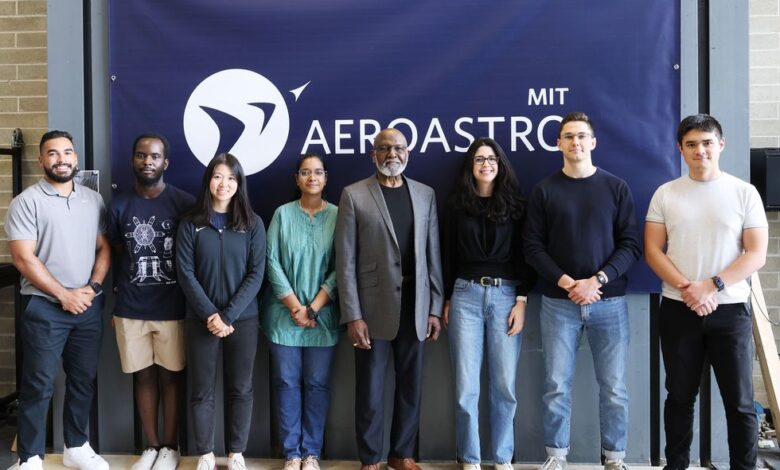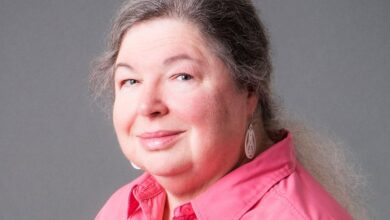Barrier Breaker Shapes Aerospace Engineering’s Future

Wesley L. Harris’s life is a testament to the power of mentorship and determination. Harris, born in 1941 in Richmond, Virginia, grew up during the tumultuous years of the Civil Rights Movement and faced an environment fraught with challenges. His parents, both of whom only had a third-grade education, walked to Richmond from rural Virginia counties when the Great Depression left the region’s farming communities destitute. They found work as laborers in the city’s tobacco factories but pushed their son to pursue higher education so he could live a better life.
Today, Harris is a professor of aeronautics and astronautics at MIT and heads the school’s Hypersonic Research Laboratory. More importantly, he is committed to fostering the next generation of engineers, particularly students of color.
“I’ve been keeping my head down, working with students of color—especially at the Ph.D. level—to produce more scholars,” Harris says. “I do feel good about that.”
From physics to aerospace engineering
Harris’s journey into the world of science began under the guidance of his physics teacher at the all-Black Armstrong High School, in Richmond. The instructor taught Harris how to build a cloud chamber to investigate the collision of alpha particles with water droplets. The chamber made it possible to visualize the passage of ionizing radiation emitted by radium 226, which Harris sourced from a wristwatch that used the substance to make the watch hands glow in the dark.
The project won first prize at Virginia’s statewide Black high school science fair, and he took the bold step of signing up for a separate science fair held for the state’s White students. Harris’s project received the third-place prize in physics at that event.
Those awards and his teacher’s unwavering belief in Harris’s potential pushed him to aim higher. He says that he wanted nothing more than to become a physicist like her. Ironically, it was also her influence that led him to shift his career path from physics to aeronautical engineering.
When discussing which college he should attend, she spoke to him as though he were a soldier getting his marching orders. “Wesley, you will go to the University of Virginia [in Charlottesville],” she proclaimed.
Harris applied, knowing full well that the school did not allow Black students in the 1960s to pursue degrees in mathematics, physics, chemistry, English, economics, or political science.
The only available point of entry for him was the university’s School of Engineering. He chose aerospace as his focus—the only engineering discipline that interested him. Harris became one of only seven Black students on a campus with 4,000 undergrads and the first Black student to join the prestigious Jefferson Society literary and debate club. He graduated in 1964 with a bachelor’s degree in aerospace engineering. He went on to earn his master’s and doctoral degrees in aerospace engineering from Princeton in 1966 and 1968, respectively.
Harris’s Ph.D. thesis advisor at Princeton reinforced the values of mentorship and leadership instilled by his high school teacher, urging Harris to focus not only on his research but on how he could uplift others.
Harris began his teaching career by breaking down barriers at the University of Virginia in 1968. He was the first Black person in the school’s history to be offered a tenured faculty position. He was also the university’s first Black engineering professor. In 1972, he joined MIT as a professor of aeronautics and astronautics.
Harris’s dedication to supporting underrepresented minority groups at MIT began early in his tenure. In 1975, he founded the Office of Minority Education, where he pioneered innovative teaching methods such as videotaping and replaying lectures, which helped countless students succeed. “Some of those old videotapes may still be around,” he says, laughing.
“I’ve been keeping my head down, working with students of color—especially at the Ph.D. level—to produce more scholars. I do feel good about that.”
Over the years, he has periodically stepped away from MIT to take on other roles, including Program Manager in the Fluid and Thermal Physics Office and as manager of Computational Methods at NASA’s headquarters in Washington, D.C., from 1979 to 1980. He returned to NASA in 1993 and served as Associate Administrator for Aeronautics, overseeing personnel, programs, and facilities until 1995.
He also served as Chief Administrative Officer and Vice President at the University of Tennessee Space Institute in Knoxville from 1990 to 1993 and as Dean of Engineering at the University of Connecticut, in Storrs, from 1985 to 1990.
He was selected for membership in an oversight group convened by the U.S. House of Representatives Science Subcommittee on Research and Technology to monitor the funding activities of the National Science Foundation. He has also been a member and chair of the U.S. Army Science Board.
Solving problems with aircraft
Harris is a respected aeronautical innovator. Near the end of the Vietnam War, the U.S. Army approached MIT to help it solve a problem. Helicopters were being shot down by the enemy, who had learned to distinguish attack helicopters from those used for performing reconnaissance or transporting personnel and cargo by the noise they made. The Army needed a solution that would reduce the helicopters’ acoustic signatures without compromising performance. Harris and his aeronautics team at MIT delivered that technology. In January 1978, they presented a lab report detailing their findings to the U.S. Department of Defense. “Experimental and Theoretical Studies on Model Helicopter Rotor Noise” was subsequently published in The Journal of Sound and Vibration. A year later, Harris and his colleagues at the Fluid Dynamic Research Laboratory wrote another lab report on the topic, “Parametric Studies of Model Helicopter Blade Slap and Rotational Noise.”
Harris has also heightened scientists’ understanding of the climate-altering effects of shock waves propagating upward from aircraft flying at supersonic speeds. He discovered that these high-speed airflows trigger chemical reactions among the carbon, oxides, nitrides, and sulfides in the atmosphere.
For these and other contributions to aerospace engineering, Harris, a member of the American Institute of Aeronautics and Astronautics, was elected in 1995 to the National Academy of Engineering. In 2022, he was named the academy’s vice president.
A model of educational leadership
Despite his technical achievements, Harris says his greatest fulfillment comes from mentoring students. He takes immense pride in the four students who recently earned doctorates in hypersonics under his guidance, especially a Black woman who graduated this year.
Harris’s commitment to nurturing young talent extends beyond his graduate students. For more than two decades, he has served as a housemaster at MIT’s New House residence hall, where he helps first-year undergraduate students successfully transition to campus life.
“You must provide an environment that fosters the total development of the student, not just mastery of physics, chemistry, math, and economics,” Harris says.
He takes great satisfaction in watching his students grow and succeed, knowing that he helped prepare them to make a positive impact on the world.
Reflecting on his career, Harris acknowledges the profound impact of the mentors who guided him. Their lessons continue to influence his work and his unwavering commitment to mentoring the next generation.
“I’ve always wanted to be like my high school teacher—a physicist who not only had deep knowledge of the scientific fundamentals but also compassion and love for Black folks,” he says.
Through his work, Harris has not only advanced the field of aerospace engineering but has also paved the way for future generations to soar.
IEEE Spectrum




